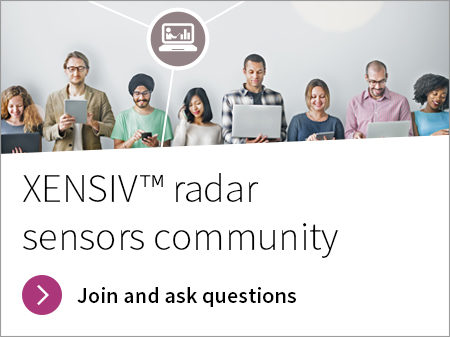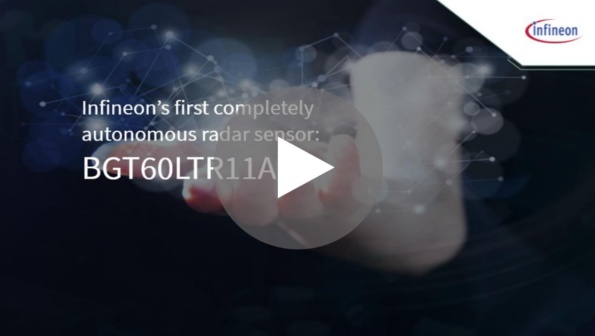Radar sensors for IoT
XENSIV™ 24GHz and 60GHz radar sensing solutions for industrial and consumer applications – small, accurate, precise
Radar sensors for IoT subcategories
As market leader in radar chips, Infineon offers a wide portfolio of mmWave radar sensors as part of the XENSIV™ sensor family – including Doppler radar as well as FMCW radar systems. This portfolio includes the smallest 24GHz MMIC in the market, as well as the largest and most integrated 24GHz radar transceiver family currently available.
These industrial radar sensors serve industrial and consumer as well as smart home applications. For example, Infineon’s 60GHz radar sensor BGT60TR13C is implemented in the Google Pixel 4 smartphone.
Motion detection with radar sensors offers significant advantages over PIR and other motion sensing technologies
With Infineon’s 24GHz and 60GHz radar portfolio a wide range of application can be covered. For instance, motion detection triggering systems such lighting solutions, automatic doors, camera and security systems, or smart home devices can be developed with Infineon’s radar sensor solutions.
In contrast to other motion detection technologies like PIR, radar technology offers significant advantages. These include smaller system sizes, greater accuracy, and more precise measurements of detected objects. For example, using 24GHz radar sensors for drones improves soft landing and obstacle avoidance. Additionally, IoT radar sensors can also determine the direction of a moving object, speed of an object, distance and, depending on the antenna configuration, even the position of a moving object.
When to use 24GHz or 60GHz radar technology
In the radar 24GHz range, the bandwidth for FMCW radar operations covers 250MHz within the regulated ISM band. In the radar 60GHz regime, an unlicensed ultra-wideband of up to 7GHz can be used for short-range applications. Consequently, 60GHz FMCW IoT radar systems can offer a better resolution and therefore allow additional use cases such as human tracking and segmentation. Even gesture sensing, material classification, or the monitoring of various vital functions (respiration, heartbeat, or even blood pressure) is possible with IoT radar technology due to micro motion detection.
| Applications | Key benefits |
|
|










